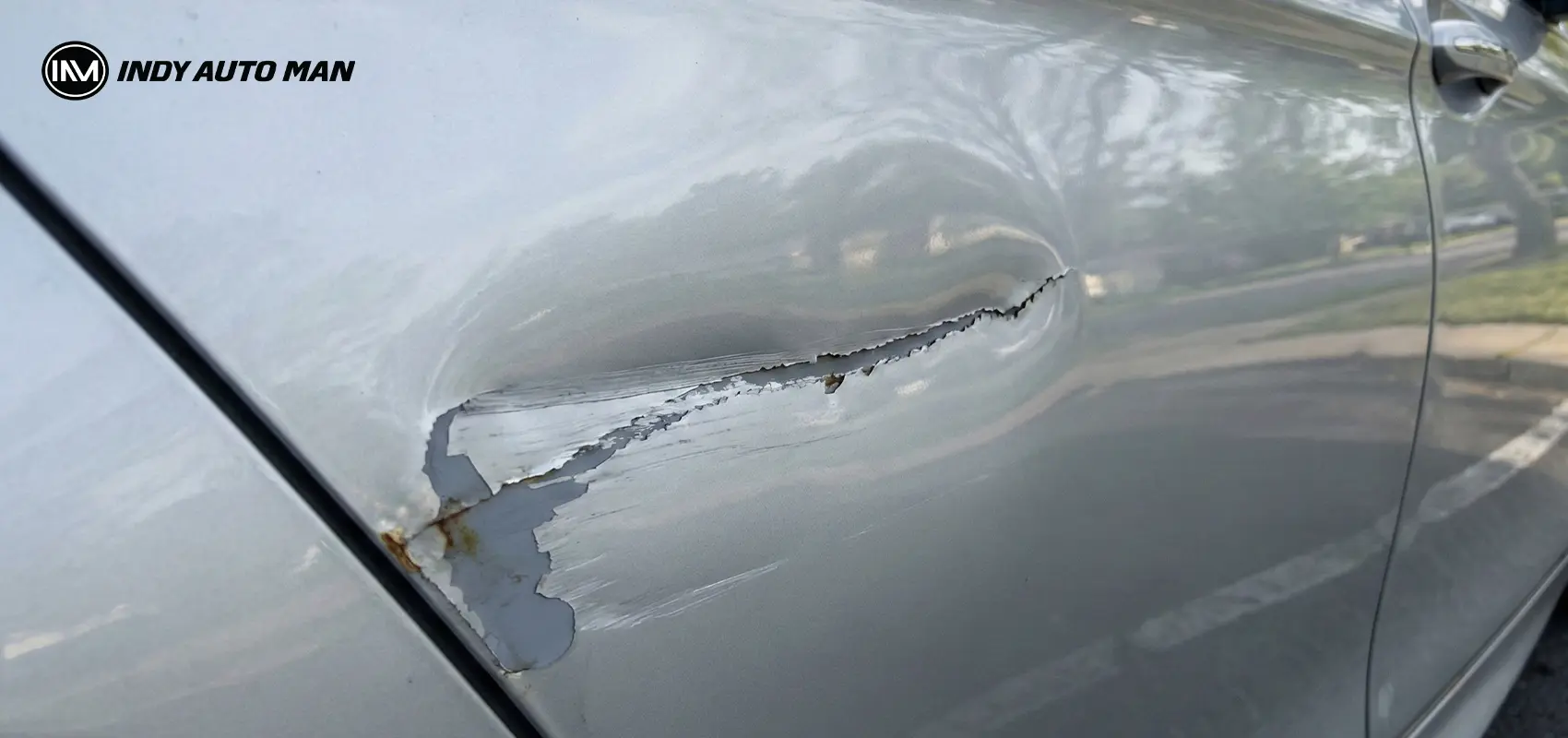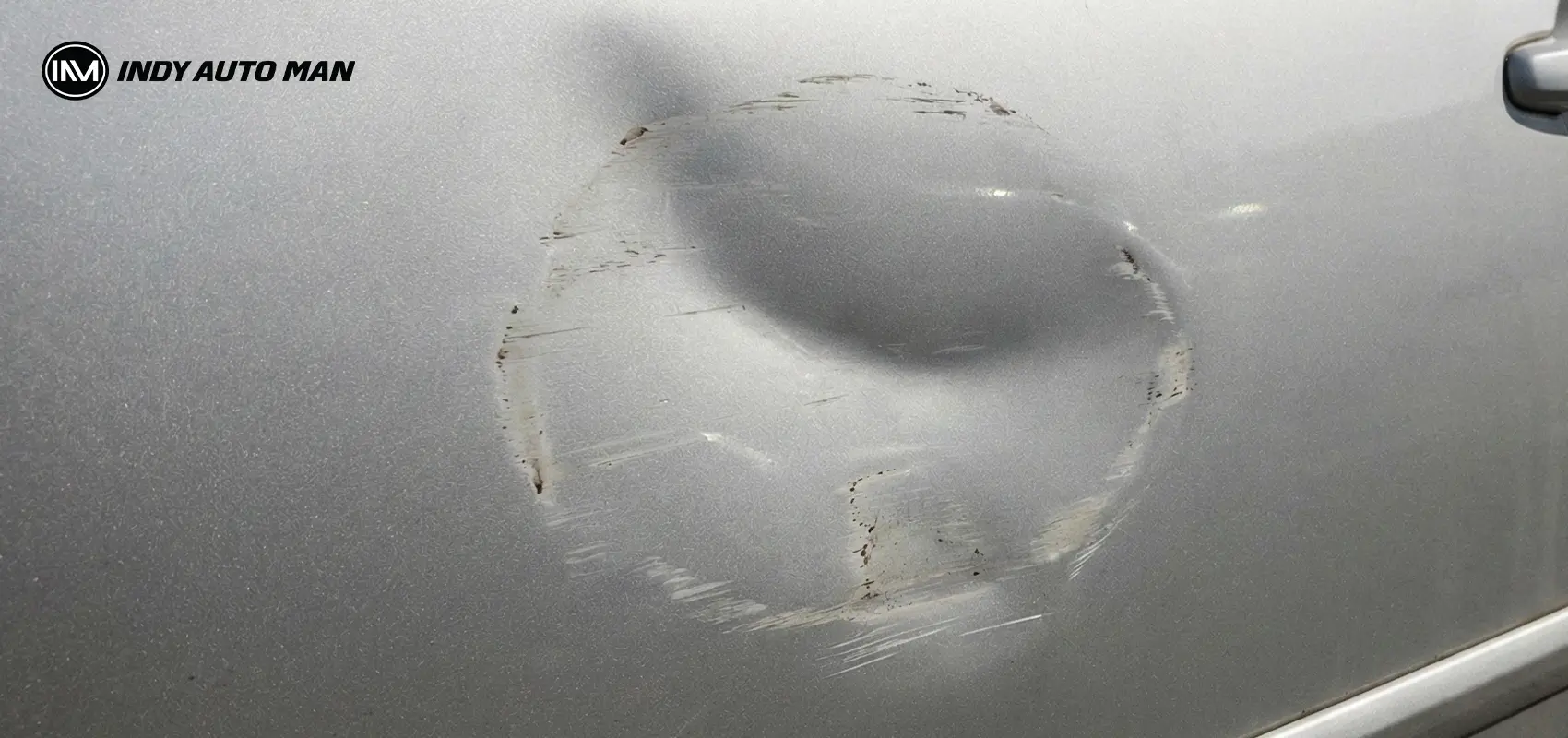How to Remove Dents and Scratches

DIY Fixes for Dents and Scratches
Almost any driver at least once in life is faced with the need to remove a dent or a scratch on a door, hood, or fender of a car. But it is not always necessary to do expensive repairs of body parts with their alignment, priming, and full painting. Sometimes you can manage on your own.
How to Remove Scratches
Before proceeding with the removal of scratches, determine the depth of damage to the paintwork:
- If you see a white coating on a scratch, most likely it did not damage the paintwork.
- If the scratch damaged the paintwork right down the metal, it can become a more serious problem. The body element will need a complete painting, with preliminary preparation of the surface and professional drying.
Polishing Scratches
Minor body scratches that have not damaged the paintwork to the metal can be polished using special agents. Here’s what you need to do:
- Step 1: Remove the dirt from the surface of the body. Next, polish the body element. Apply some polish to the defective part and then, using a terry cloth or a microfiber cloth, start polishing the surface.
- Step 2: Check if there is an effect from polishing. If necessary, repeat the entire process. Do everything slowly, unhurriedly, and smoothly. Check constantly whether the scratch disappears.
Using Scratch Removing Pen
If polishing fails to remove scratches from the car body, you may try to use a scatch-removing pen. Buy a pen that matches the color of the body of your car as much as possible. Next, you need to do the following:
- Step 1: Clean the scratch with a solvent to remove dust from the surface and degrease it. Apply a pen, trying not to paint the intact areas of the paintwork. Let the paint dry for at least a day.
- Step 2: Clean up the scratch with fine sandpaper or rubber sponge. Do the cleaning smoothly.
- Step 3: Apply the polishing agent to the damaged surface and use a terry towel or a microfiber cloth to polish the surface. The polishing agent will return the cleaned body surface to its previous and desired shine.
- Step 4: After applying the pen for the first time and then sanding and polishing the scratch, you will most likely see any remaining damaged areas on the part. In this case, repeat the whole process, applying an even larger layer of paint with a pen. You need to fill the scratch, thereby leveling it with the rest of the surface.
Are Car Scratches Worth Repairing?
If the scratch is not deep, you will be able to remove the damage on the paintwork on your own. This will help restore the car to its original appearance and add some points when you decide to sell it.
Can You Fix Car Dents Yourself?

If the dent is easily accessible for repair, you can remove the damage in just a few minutes. Let’s see in what ways you can do this.
Removing Dents with a Magnet
If the dents are not very deep, the most effective way to level the body surface will be to use a magnet. Powerful neodymium search magnets are best suited for the role of a retractor. When carrying out the retraction operation, observe several rules:
- Do not attach a magnet directly to the body. You need to apply the magnet to the dent through a cloth to weaken the effect of the magnetic force.
- Move the magnet through the lining from the edge to the center of the dent, pulling it towards you.
Before you try this technology on your car, we recommend practicing on deformed pieces of iron.
Removing Dents with Vacuum Suction Cups
Many professional suction cups come with a selection of rubber tips of different sizes. The efficiency of the work directly depends on how you fit the tool to a dent. For optimal results and to avoid subsequent staining, make sure that the suction cup diameter is slightly less than the size of the dent. The edges of the suction cup must fit snugly against the metal. Otherwise, the creation of a vacuum adhesion will be difficult.
- Before attaching the suction cup, wash and dry the damaged sector.
- After attaching the suction cup, pump out the air from the formed cavity. In different models of suction cups, this process is carried out in different ways.
- Pull the handle of the suction cup in the desired direction. Muscle strength is usually sufficient, but sometimes the traction of other vehicles can be used.
- Blow the air into the cavity between the body and the suction cup to detach the pulling device.










